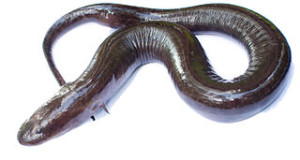Please see Natural History of the Axolotl for information on axolotls in their natural habitat.
 I highly recommend the Mexican axolotl as an aquarium animal for both beginning and advanced hobbyists, and include them whenever possible in the zoo exhibits that I design. Assuming that attention is paid to temperature and water quality (please see below), axolotls are hearty, long-lived and quite simple to breed. They are also extremely responsive pets, taking readily to hand feeding and perfectly content to be out and about by day.
I highly recommend the Mexican axolotl as an aquarium animal for both beginning and advanced hobbyists, and include them whenever possible in the zoo exhibits that I design. Assuming that attention is paid to temperature and water quality (please see below), axolotls are hearty, long-lived and quite simple to breed. They are also extremely responsive pets, taking readily to hand feeding and perfectly content to be out and about by day.
Enclosure
Axolotls are entirely aquatic, with an adult requiring an aquarium of approximately 10 gallons in size; 5-10 gallons more should be provided for each additional animal.
Axolotls also fare well in plastic terrariums or sweater boxes that are emptied and cleaned as opposed to filtered; this method is very useful when rearing large numbers of young.
Physical Environment
 Axolotls are unusual among salamanders in not requiring a shelter, but the provision of such will help to alleviate aggression when groups are kept together. They readily take up residence in plastic reptile caves, clay flower pots or PVC pipes.
Axolotls are unusual among salamanders in not requiring a shelter, but the provision of such will help to alleviate aggression when groups are kept together. They readily take up residence in plastic reptile caves, clay flower pots or PVC pipes.
The young enjoy consuming their brethren, and should be afforded as much opportunity to avoid each other as is possible. Individual shelters are not effective in preventing this (among young animals) in group situations. Rather, fill most of the aquarium’s water column with Penn Plax Baby Hideouts and other plastic aquarium plants. Weight these down with plant ties to cover the base of the aquarium, and position tall plants so that they fill the vertical space as well.
Axolotls can be kept in bare-bottomed or planted tanks. If gravel is used, it should be of a size that cannot be swallowed. Small rocks ingested during feeding are often passed, but impactions can occur. Live aquarium plants, if used, should be sturdy and well-rooted, or floating.
Light and Heat
A florescent bulb is best used for illumination, as it will not add significantly to water temperature. Axolotls do not need a source of UVB light.
Axolotls are native to cool, high-altitude lakes, and do best at water temperatures of 62-70 F, with a dip to 50-52 F in winter, if possible. People do keep them at warmer temperatures, but such leaves the salamanders susceptible to illness and fungal problems. At temperatures above 75 F, Saprolegnia infection is not infrequent (this and certain bacterial infections usually cause the animals to float to the surface). A cool basement is ideal for year-round maintenance.
Water Quality and Filtration
Axolotls are fairly tolerant of a wide variety of conditions, but should ideally be kept in soft water with a pH of 6.9-7.6. Hard or acidic water can damage the gills.
Adequate filtration and frequent water changes are essential. Axolotls have large appetites and excrete copious amounts of nitrogenous wastes (which are largely dissolved in water and not visible), and can quickly succumb to ammonia toxicity. An ammonia test kit should always be on hand.
Canister, hanging or in-tank filters all have their place in axolotl aquariums, but each must be coupled with regular water changes. Larvae are best kept in aquariums filtered with sponge or corner filters. In all cases, filter outflow should be adjusted so as not to disturb the salamanders, as they are not strong swimmers and prefer still water.
Check out: Captive Care of the Mexican Axolotl Ambystoma mexicanum – Part 2, to read the rest of this article.
 That Reptile Blog – Reptile, Amphibian and Exotic Pet Care and Information
That Reptile Blog – Reptile, Amphibian and Exotic Pet Care and Information



i love this cute thing 🙂
Hello Brianna, Frank Indiviglio here.
Thanks for your interest in our blog. You’re in good company – axolotls are very popular, and were something of a national rage in Japan! Unfortunately, they are almost extinct in the wild, but happily breed very well in captivity.
I look forward to hearing from you again,
Good luck and please keep me posted.
Best regards, Frank Indiviglio.